
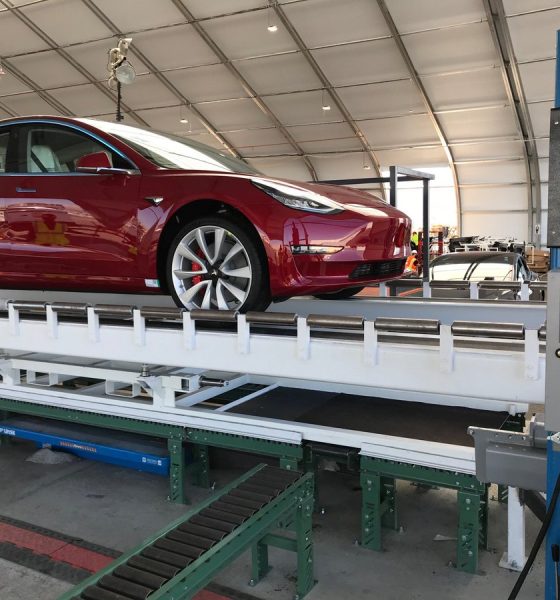
Investor's Corner
Tesla Model 3 production in Gigafactory 3 to begin in second half of 2019: report
The development of Tesla’s Gigafactory 3 continues to move at a rapid pace, with recent reports suggesting that electric car production in the upcoming facility could begin as early as the second half of 2019. Provided that there are no delays in the construction of the factory itself, and provided that Tesla can ship and set up its production lines on time, the latter half of 2019 could signal the beginning of Model 3 production in China.
Local media outlet Caijing.com noted that the factory is about to begin construction, particularly since the 864,885-square meter plot of land in the Lingang Industrial Zone has been leveled. In a post on its official WeChat account, the Shanghai government further indicated that Mayor Ying Yong and Vice Mayor Wu Qing have met with Tesla’s leaders in China while checking the company’s new vehicles like the Model 3. During their visit, the Shanghai officials reportedly encouraged parties involved in the project to expedite the construction of Gigafactory 3 even more.
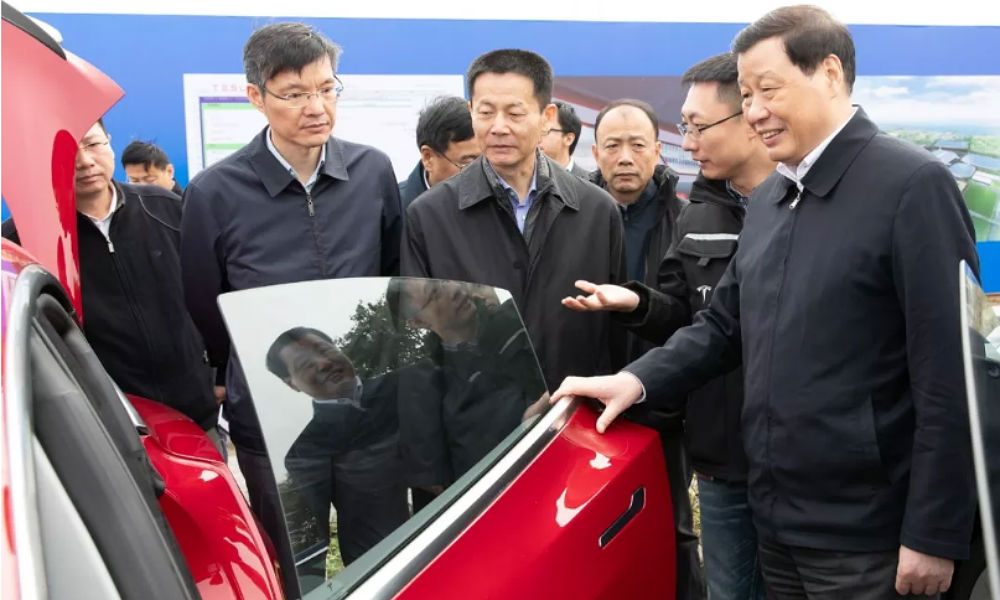
The progress of Tesla’s Gigafactory 3 has been nothing short of remarkable. When Elon Musk announced the target timeline for the project earlier this year, the company’s critics were immediately skeptical. Tesla initially noted that vehicle production in Gigafactory 3 would start roughly two years after the facility’s construction begins, ramping to an output of 500,000 vehicles per year 2-3 years after. The timeline, which could only be described as classic Elon Musk, was met with doubts from Wall Street. Consumer Edge Research senior auto analyst James Albertine, for one, dubbed Gigafactory 3’s timeline as “not feasible.”
Despite its initial timeline already being met by raised eyebrows from Wall Street, Tesla announced an even more aggressive target for the project after its stellar third quarter. In its Q3 vehicle production and deliveries report, Tesla noted that it was accelerating the construction of Gigafactory 3. The company also noted that it expects the facility’s construction to be rapid and capital-efficient, thanks to lessons learned from the Model 3 ramp in the United States.
Beyond the lessons from the Model 3 ramp, credit is due to the Chinese government for its support for Tesla and the upcoming factory. Local state media has been openly supportive of the project and Tesla as a whole, and the government even bent its rules a little by allowing the electric car maker to become the sole owner of Gigafactory 3. The government’s support became particularly evident when Tesla went unchallenged in its bid for an 864,885-square meter plot of land in Shanghai’s Lingang area, as well as in the rapid release of low-interest loans for the project from local Shanghai banks.
November 29th 2018, Tesla Direct Experience Center officially grand opening at the Wenzhou Fortune Experience Center. To date, Tesla has more than 44 direct experience centers and service centers in mainland China 🇨🇳 .$TSLA #Tesla #China #TeslaChina pic.twitter.com/X8nJHVJCNz
— vincent (@vincent13031925) November 30, 2018
The Chinese government’s favor for Tesla has allowed the company to maintain a strong brand in the country, despite challenges posed by a 40% import tariff placed on the Model S and Model X due to the trade war between China and the United States. Even before US President Donald Trump announced on Twitter that the Chinese government has agreed to “reduce and remove” import tariffs on vehicles from the United States, Tesla’s electric cars, particularly the Model 3, have been garnering a lot of interest among Chinese consumers. This interest became evident during a recent job fair at the Lingang Industrial Zone, when Tesla was forced to extend its hiring hours due to the overwhelming number of applicants for job openings at Gigafactory 3.
Considering China’s reputation for building large-scale facilities in record time, an initial Model 3 production run in Gigafactory 3 by the second half of 2019 is actually quite feasible. With the country’s capability to construct the facility quickly, the start of Model 3 production in China next year would likely be limited only by Tesla’s capability to ship and set up its vehicle production lines on time. If Tesla can accomplish this, there is very little that can go in the way of Gigafactory 3 producing the Model 3 for the local Chinese market before 2019 ends.
Tesla has the potential to be a force in China’s auto market, particularly as the country is aggressively pushing the electrification of its transport sector. China is on track to sell 2 million electric vehicles by 2020 and attain an ICE to EV ratio of 1:1 by 2030. Tesla’s Gigafactory 3, which is expected to produce 500,000 cars per year, could go a long way in helping the country achieve its own ambitious electric car goals, particularly as the company is expected to produce its two mass-market vehicles in the facility — the Model 3 sedan and the Model Y SUV.

Investor's Corner
Tesla stock closes at all-time high on heels of Robotaxi progress
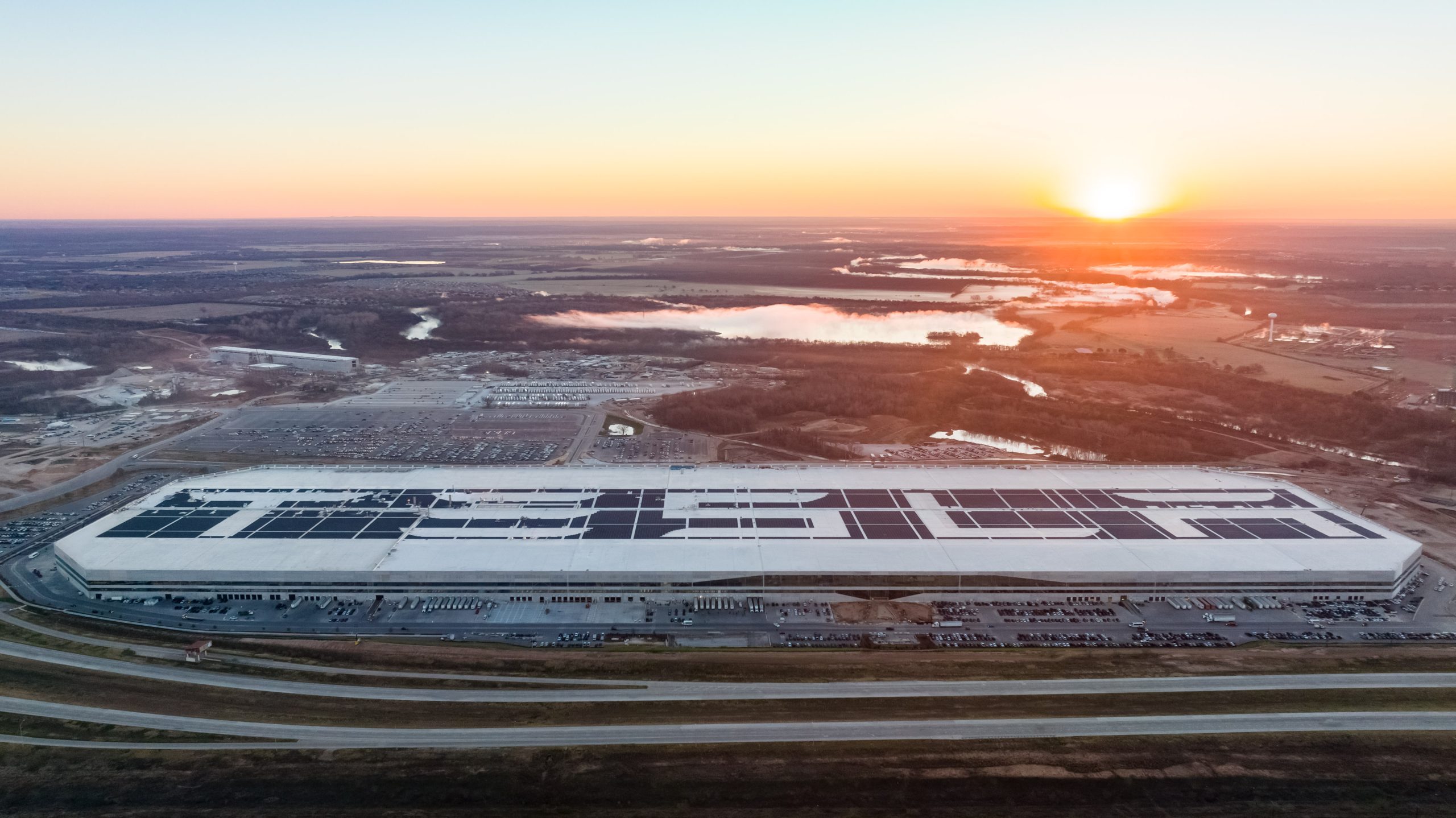
Tesla stock (NASDAQ: TSLA) closed at an all-time high on Tuesday, jumping over 3 percent during the day and finishing at $489.88.
The price beats the previous record close, which was $479.86.
Shares have had a crazy year, dipping more than 40 percent from the start of the year. The stock then started to recover once again around late April, when its price started to climb back up from the low $200 level.
This week, Tesla started to climb toward its highest levels ever, as it was revealed on Sunday that the company was testing driverless Robotaxis in Austin. The spike in value pushed the company’s valuation to $1.63 trillion.
Tesla Robotaxi goes driverless as Musk confirms Safety Monitor removal testing
It is the seventh-most valuable company on the market currently, trailing Nvidia, Apple, Alphabet (Google), Microsoft, Amazon, and Meta.
Shares closed up $14.57 today, up over 3 percent.
The stock has gone through a lot this year, as previously mentioned. Shares tumbled in Q1 due to CEO Elon Musk’s involvement with the Department of Government Efficiency (DOGE), which pulled his attention away from his companies and left a major overhang on their valuations.
However, things started to rebound halfway through the year, and as the government started to phase out the $7,500 tax credit, demand spiked as consumers tried to take advantage of it.
Q3 deliveries were the highest in company history, and Tesla responded to the loss of the tax credit with the launch of the Model 3 and Model Y Standard.
Additionally, analysts have announced high expectations this week for the company on Wall Street as Robotaxi continues to be the focus. With autonomy within Tesla’s sights, things are moving in the direction of Robotaxi being a major catalyst for growth on the Street in the coming year.
Elon Musk
Tesla needs to come through on this one Robotaxi metric, analyst says
“We think the key focus from here will be how fast Tesla can scale driverless operations (including if Tesla’s approach to software/hardware allows it to scale significantly faster than competitors, as the company has argued), and on profitability.”
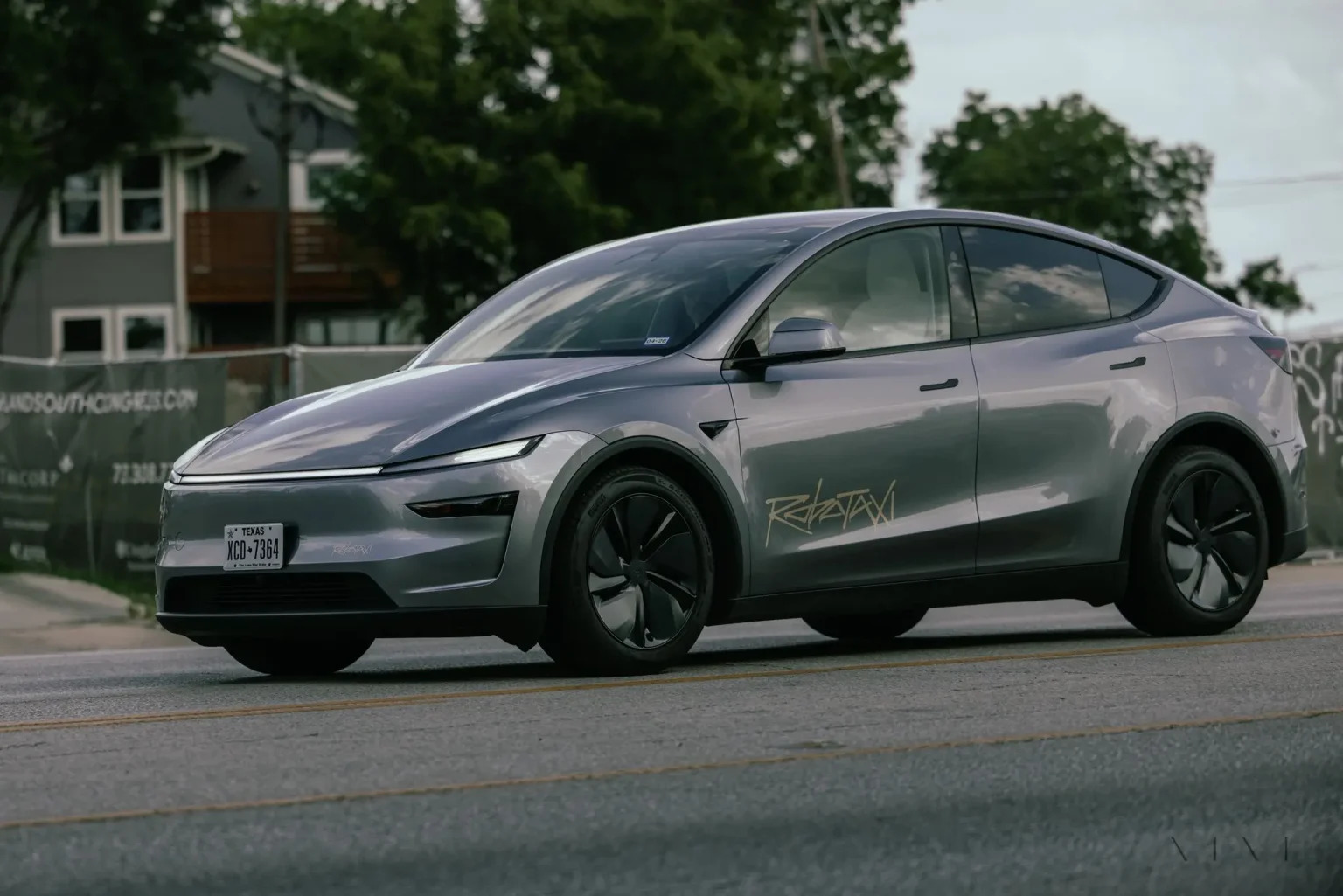
Tesla needs to come through on this one Robotaxi metric, Mark Delaney of Goldman Sachs says.
Tesla is in the process of rolling out its Robotaxi platform to areas outside of Austin and the California Bay Area. It has plans to launch in five additional cities, including Houston, Dallas, Miami, Las Vegas, and Phoenix.
However, the company’s expansion is not what the focus needs to be, according to Delaney. It’s the speed of deployment.
The analyst said:
“We think the key focus from here will be how fast Tesla can scale driverless operations (including if Tesla’s approach to software/hardware allows it to scale significantly faster than competitors, as the company has argued), and on profitability.”
Profitability will come as the Robotaxi fleet expands. Making that money will be dependent on when Tesla can initiate rides in more areas, giving more customers access to the program.
There are some additional things that the company needs to make happen ahead of the major Robotaxi expansion, one of those things is launching driverless rides in Austin, the first city in which it launched the program.
This week, Tesla started testing driverless Robotaxi rides in Austin, as two different Model Y units were spotted with no occupants, a huge step in the company’s plans for the ride-sharing platform.
Tesla Robotaxi goes driverless as Musk confirms Safety Monitor removal testing
CEO Elon Musk has been hoping to remove Safety Monitors from Robotaxis in Austin for several months, first mentioning the plan to have them out by the end of 2025 in September. He confirmed on Sunday that Tesla had officially removed vehicle occupants and started testing truly unsupervised rides.
Although Safety Monitors in Austin have been sitting in the passenger’s seat, they have still had the ability to override things in case of an emergency. After all, the ultimate goal was safety and avoiding any accidents or injuries.
Goldman Sachs reiterated its ‘Neutral’ rating and its $400 price target. Delaney said, “Tesla is making progress with its autonomous technology,” and recent developments make it evident that this is true.
Investor's Corner
Tesla gets bold Robotaxi prediction from Wall Street firm
Last week, Andrew Percoco took over Tesla analysis for Morgan Stanley from Adam Jonas, who covered the stock for years. Percoco seems to be less optimistic and bullish on Tesla shares, while still being fair and balanced in his analysis.
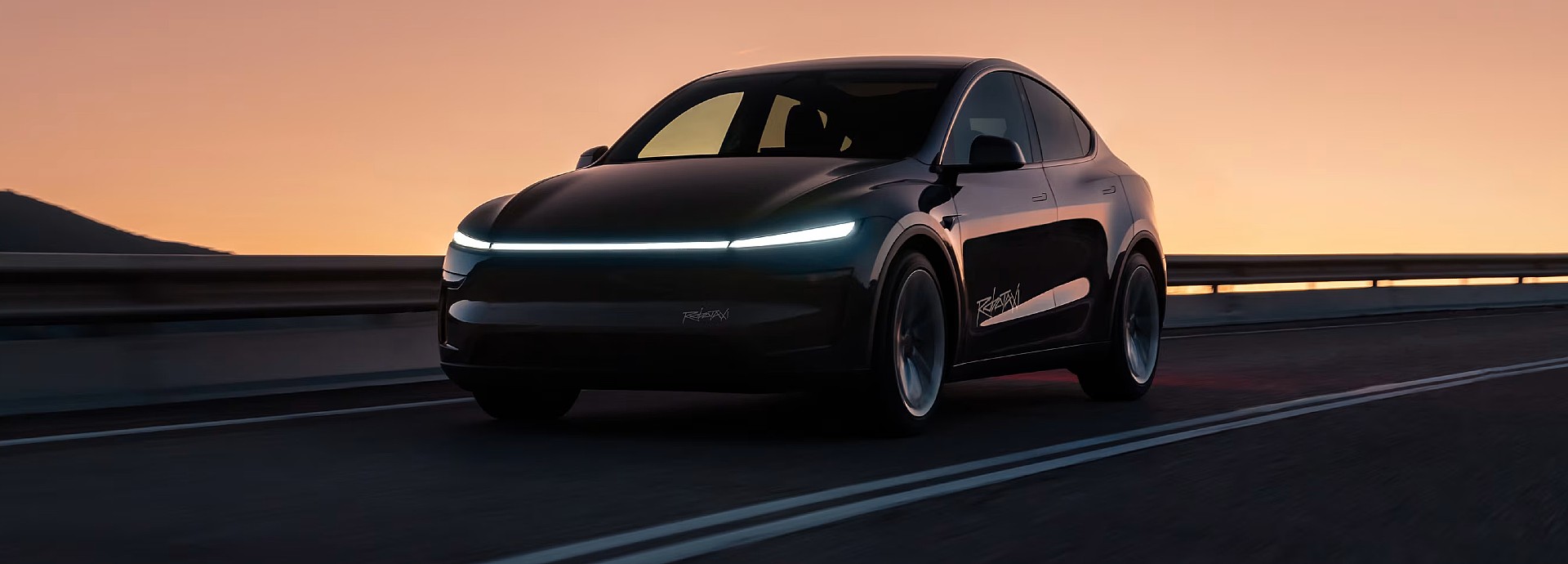
Tesla (NASDAQ: TSLA) received a bold Robotaxi prediction from Morgan Stanley, which anticipates a dramatic increase in the size of the company’s autonomous ride-hailing suite in the coming years.
Last week, Andrew Percoco took over Tesla analysis for Morgan Stanley from Adam Jonas, who covered the stock for years. Percoco seems to be less optimistic and bullish on Tesla shares, while still being fair and balanced in his analysis.
Percoco dug into the Robotaxi fleet and its expansion in the coming years in his latest note, released on Tuesday. The firm expects Tesla to increase the Robotaxi fleet size to 1,000 vehicles in 2026. However, that’s small-scale compared to what they expect from Tesla in a decade.
Tesla expands Robotaxi app access once again, this time on a global scale
By 2035, Morgan Stanley believes there will be one million Robotaxis on the road across multiple cities, a major jump and a considerable fleet size. We assume this means the fleet of vehicles Tesla will operate internally, and not including passenger-owned vehicles that could be added through software updates.
He also listed three specific catalysts that investors should pay attention to, as these will represent the company being on track to achieve its Robotaxi dreams:
- Opening Robotaxi to the public without a Safety Monitor. Timing is unclear, but it appears that Tesla is getting closer by the day.
- Improvement in safety metrics without the Safety Monitor. Tesla’s ability to improve its safety metrics as it scales miles driven without the Safety Monitor is imperative as it looks to scale in new states and cities in 2026.
- Cybercab start of production, targeted for April 2026. Tesla’s Cybercab is a purpose-built vehicle (no steering wheel or pedals, only two seats) that is expected to be produced through its state-of-the-art unboxed manufacturing process, offering further cost reductions and thus accelerating adoption over time.
Robotaxi stands to be one of Tesla’s most significant revenue contributors, especially as the company plans to continue expanding its ride-hailing service across the world in the coming years.
Its current deployment strategy is controlled and conservative to avoid any drastic and potentially program-ruining incidents.
So far, the program, which is active in Austin and the California Bay Area, has been widely successful.








